Best Retirement Investment Guides to Buy in December 2025

The Ultimate Retirement Guide for 50+: Winning Strategies to Make Your Money Last a Lifetime (Revised & Updated for 2025)



The 5 Years Before You Retire, Updated Edition: Retirement Planning When You Need It the Most


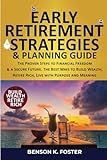
Early Retirement Strategies & Planning Guide: The Proven Steps to Financial Freedom & a Secure Future. The Best Ways to Build Wealth, Retire Rich, Live with Purpose and Meaning



The Bogleheads' Guide to Retirement Planning


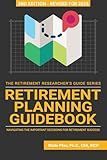
Retirement Planning Guidebook: Navigating the Important Decisions for Retirement Success (The Retirement Researcher Guide Series)



Medicare Mama's Guide to Medicare and Social Security Retirement



Keys to a Successful Retirement: Staying Happy, Active, and Productive in Your Retired Years


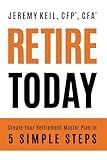
Retire Today: Create Your Retirement Master Plan in 5 Simple Steps


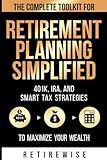
Retirement Planning Simplified: The Complete Toolkit for 401K, IRA, and Smart Tax Strategies to Maximize your Wealth (The Complete Retirement Planning Guide)


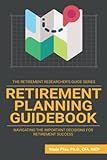
Retirement Planning Guidebook: Navigating the Important Decisions for Retirement Success


Withdrawing money from a 401(k) retirement account can be done under certain circumstances, but it is typically subject to penalties and taxes. Here are a few key things to know about how to withdraw money from a 401(k):
- Eligibility: Generally, you can start making withdrawals from your 401(k) once you reach the age of 59½. However, some plans may allow for penalty-free withdrawals as early as age 55 under certain specific conditions. It's important to check the rules of your particular plan.
- Penalties: If you withdraw money from a 401(k) before reaching the age of 59½, you will likely face an early withdrawal penalty of 10% on top of income taxes. There are some exceptions to this penalty, such as for hardship withdrawals or for individuals who separate from service after turning 55.
- Taxation: When you withdraw money from a traditional 401(k), the withdrawn amount is generally considered taxable income. Therefore, you will have to pay income tax on the amount you withdraw. However, if you have a Roth 401(k), qualified distributions are generally tax-free since you've already paid taxes on the contributions.
- Withdrawal Methods: There are different ways to withdraw money from a 401(k), such as taking a lump sum distribution, receiving periodic payments, or opting for annuities. Some plans also allow for loans against the 401(k) balance, which needs to be paid back over time.
- Required Minimum Distributions (RMDs): After reaching the age of 72 (or after 70½ if you were born before July 1, 1949), you are typically required to start taking minimum distributions from your 401(k) each year. These mandatory withdrawals ensure that the IRS collects taxes from your retirement funds.
- Rolling Over: Instead of withdrawing money directly, you can rollover your 401(k) to another qualified retirement account, such as an Individual Retirement Account (IRA) or another employer's 401(k). This allows you to avoid penalties and taxes while maintaining the tax-advantaged status of your funds.
- Consult with Professionals: Withdrawing money from a 401(k) can have significant financial implications, so it's often advisable to consult with a financial advisor or tax professional who can guide you through the process and help you make informed decisions.
Remember, since different employers offer different 401(k) plans, it's crucial to review the terms and rules specific to your plan before making any withdrawal decisions.
Can I take multiple withdrawals from my 401(k) account?
Yes, you can take multiple withdrawals from your 401(k) account. However, there may be certain rules and limitations associated with doing so. It is important to contact your plan administrator or financial advisor to understand the specific rules and potential implications of taking multiple withdrawals from your account. Additionally, keep in mind that early withdrawals before age 59 1/2 may be subject to penalties and taxes.
How to withdraw money from a 401(k) after turning 59.5 years old?
To withdraw money from a 401(k) after reaching 59.5 years old, you can follow these steps:
- Review your plan: Understand the specific withdrawal rules and options provided by your 401(k) plan. Some plans may have different rules and restrictions, so familiarize yourself with the details.
- Contact your plan administrator: Reach out to the administrator of your 401(k) plan to verify the necessary steps and documentation required for withdrawal. They will guide you through the process and provide the necessary forms.
- Complete the withdrawal paperwork: Fill out the necessary withdrawal forms provided by your plan administrator. This may include forms such as a distribution request form or a rollover request form. Ensure that you provide accurate and up-to-date personal information.
- Choose the withdrawal method: Decide on the withdrawal method that suits your needs best. Several common options include: Lump-sum withdrawal: Receive the entire balance of your 401(k) as a single payment. Partial withdrawal: Withdraw a specific amount or percentage of your 401(k) balance. Periodic withdrawals: Set up regular distributions over a period of time, like monthly or annually. Rollover: Transfer your 401(k) funds to an Individual Retirement Account (IRA) or another eligible retirement plan.
- Determine tax implications: Consider the potential tax consequences of your withdrawal. Withdrawals from traditional pre-tax 401(k) accounts are generally taxed as ordinary income, while withdrawals from Roth 401(k) accounts may be tax-free if specific criteria are met.
- Submit the forms: After completing the necessary paperwork, submit it to your plan administrator following their instructions. Ensure you keep copies of all forms for your records.
- Wait for processing: The plan administrator will process your withdrawal request. The time it takes to complete the process can vary, so it's advisable to inquire about the estimated timeline.
- Consider financial advice: Before making any decisions regarding your 401(k) withdrawal, it can be helpful to consult with a financial advisor who can provide guidance based on your individual circumstances.
Remember, it is important to be aware of any fees or penalties associated with early withdrawals or specific plan rules.
How to withdraw money from a 401(k) for a down payment on a house?
Withdrawing money from a 401(k) for a down payment on a house is possible, but it may come with penalties and tax implications. Here are the steps to follow:
- Review your 401(k) plan: Check your plan's rules and regulations regarding withdrawals. Some plans may not allow early withdrawals, so it's essential to understand the specific provisions of your plan.
- Determine eligibility: Verify if you qualify for a hardship withdrawal or loan. A hardship withdrawal is typically allowed for specific reasons like purchasing a primary residence. Alternatively, some plans offer the option of taking a loan against your 401(k).
- Assess the alternatives: Before withdrawing from your 401(k), consider other options like saving for a down payment, exploring low down payment mortgage programs, or looking for financial assistance from family members.
- Seek advice: Consult a financial advisor or tax professional who can guide you through the process and help you understand the potential costs and consequences associated with withdrawing money from your retirement account.
- Complete the necessary paperwork: If you are eligible for a hardship withdrawal or loan, contact your plan administrator or human resources department to request the required forms. You will need to provide documentation, such as a purchase contract or a cost estimate, to support your request.
- Withdraw the funds: Once your request is approved, you can withdraw the funds from your 401(k). If you take a hardship withdrawal, it will be subject to income tax and a 10% early withdrawal penalty if you're under 59 ½ years old. If you opt for a loan, you will need to repay it within a specified period, usually five years.
Remember, withdrawing money from your retirement account should be a last resort option since it can impact your long-term financial security. It is important to carefully consider the consequences and explore other alternatives before making this decision.
What are the restrictions on withdrawing money from a 401(k)?
There are several restrictions on withdrawing money from a 401(k) retirement account. Here are some key points:
- Age Restriction: If you withdraw money from a 401(k) before the age of 59½, you generally have to pay income taxes on the amount withdrawn along with a 10% early withdrawal penalty, unless an exception applies.
- Employment Status: If you are still employed by the company that sponsors the 401(k) plan, you may face restrictions on withdrawal unless you meet specific conditions such as financial hardship or have reached the age of 59½.
- Plan Rules: Each 401(k) plan may have different rules and requirements regarding withdrawals. Some plans may allow in-service withdrawals after a certain age or under certain specific circumstances, while others may have stricter rules.
- Required Minimum Distributions (RMDs): Once you reach the age of 72 (or 70½ for individuals born before July 1, 1949), you are required to begin taking RMDs from your 401(k) account. Failure to take these distributions can result in hefty penalties.
- Tax Consequences: Withdrawals from a traditional 401(k) plan are generally taxable as ordinary income, meaning it adds to your taxable income for the year. Withdrawals from a Roth 401(k) are tax-free if the account has been open for at least five years and certain conditions are met.
It's important to note that specific rules and exceptions can vary depending on individual circumstances, so it's advisable to consult with a financial advisor or the plan administrator to understand the exact restrictions and implications before withdrawing money from a 401(k) account.
How to transfer 401(k) funds to a bank account?
To transfer 401(k) funds to a bank account, you generally need to complete the following steps:
- Review your 401(k) plan: Examine the rules of your specific 401(k) plan to ensure that you are eligible for a withdrawal or transfer. Some plans may have restrictions or penalties for early withdrawals.
- Determine the transfer options: Check if your plan allows for an in-service withdrawal or an option to roll over your funds into an Individual Retirement Account (IRA). Alternatively, you may also be able to withdraw the funds directly.
- Open an IRA or bank account: If you choose to roll over the funds, open an IRA with a financial institution of your choice. You can set up the account online, over the phone, or in person. If you prefer transferring directly to your bank account, ensure it is active and in your name.
- Contact your plan administrator: Reach out to the administrator of your 401(k) plan for specific instructions on how to initiate the transfer. They will guide you through the necessary paperwork and may provide you with forms or an online portal to request the transfer.
- Complete the necessary paperwork: Fill out any required forms accurately and completely. Some common forms include the distribution or rollover forms, beneficiary forms, or tax-related documents. Be sure to provide accurate information to prevent delays or issues.
- Submit the paperwork: Send the completed paperwork to your plan administrator based on their specific instructions. Check if they accept electronic submissions or if you need to mail the forms. Keep copies of all documents for your records.
- Follow up and monitor the transfer: Once you have submitted the paperwork, check with your plan administrator or financial institution to track the status of the transfer. They should provide updates on the progress and timeline of the transfer.
- Confirm the deposit: Once the transfer is completed, verify that the funds have been deposited into your bank account or IRA. Review the account statements and contact your financial institution if you have any doubts or concerns.
It's essential to note that transferring 401(k) funds may have tax implications and other financial considerations, so it is advisable to consult a financial advisor or tax professional before making any decision.
What is the difference between a 401(k) loan and a withdrawal?
A 401(k) loan and a withdrawal are two different methods of accessing funds from a 401(k) retirement account, but they have distinct differences:
- Purpose: A 401(k) loan is designed to be a temporary borrowing from your own retirement savings, usually for a specific financial need such as home purchase, education expenses, or to pay off debt. On the other hand, a 401(k) withdrawal refers to permanently withdrawing money from your retirement savings, typically for financial emergencies or other immediate needs.
- Repayment: When you take a 401(k) loan, you are required to repay the borrowed amount (plus interest) back into your 401(k) account within a specific timeframe, usually within 5 years. The interest paid goes back into your own retirement account. However, with a withdrawal, you don't have to repay the amount withdrawn. It is permanently removed from your retirement savings, potentially impacting your long-term financial security.
- Taxes and Penalties: In case of a 401(k) loan, the borrowed amount is tax-free, meaning you don't have to pay taxes on it as long as you repay it on time. However, if you fail to repay the loan or leave your job, the outstanding balance becomes taxable income, subject to income tax and a potential early withdrawal penalty (if you are below the age of 59½). On the other hand, in the case of a 401(k) withdrawal, the amount withdrawn is considered taxable income, subject to income tax. Additionally, if you are below the age of 59½, you may also incur an early withdrawal penalty.
- Impact on Retirement Savings: With a 401(k) loan, you temporarily reduce the amount of money invested in your retirement account until you repay the borrowed amount. However, the interest you pay on the loan helps offset some of the opportunity costs. In contrast, a withdrawal permanently reduces your retirement savings and can have a significant long-term impact on your ability to accumulate wealth for retirement.
It is important to carefully consider the consequences, tax implications, and potential impact on retirement savings before choosing between a 401(k) loan and withdrawal. Also, it's advisable to consult with a financial advisor or tax professional to make an informed decision based on your individual circumstances.
